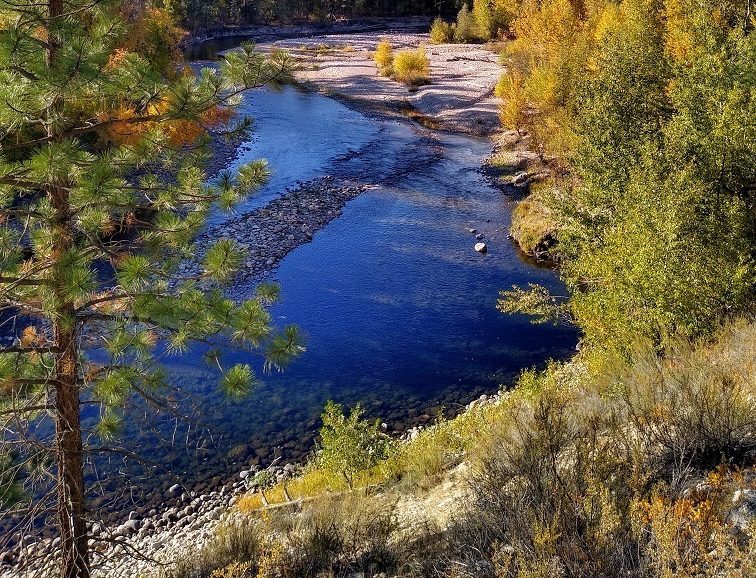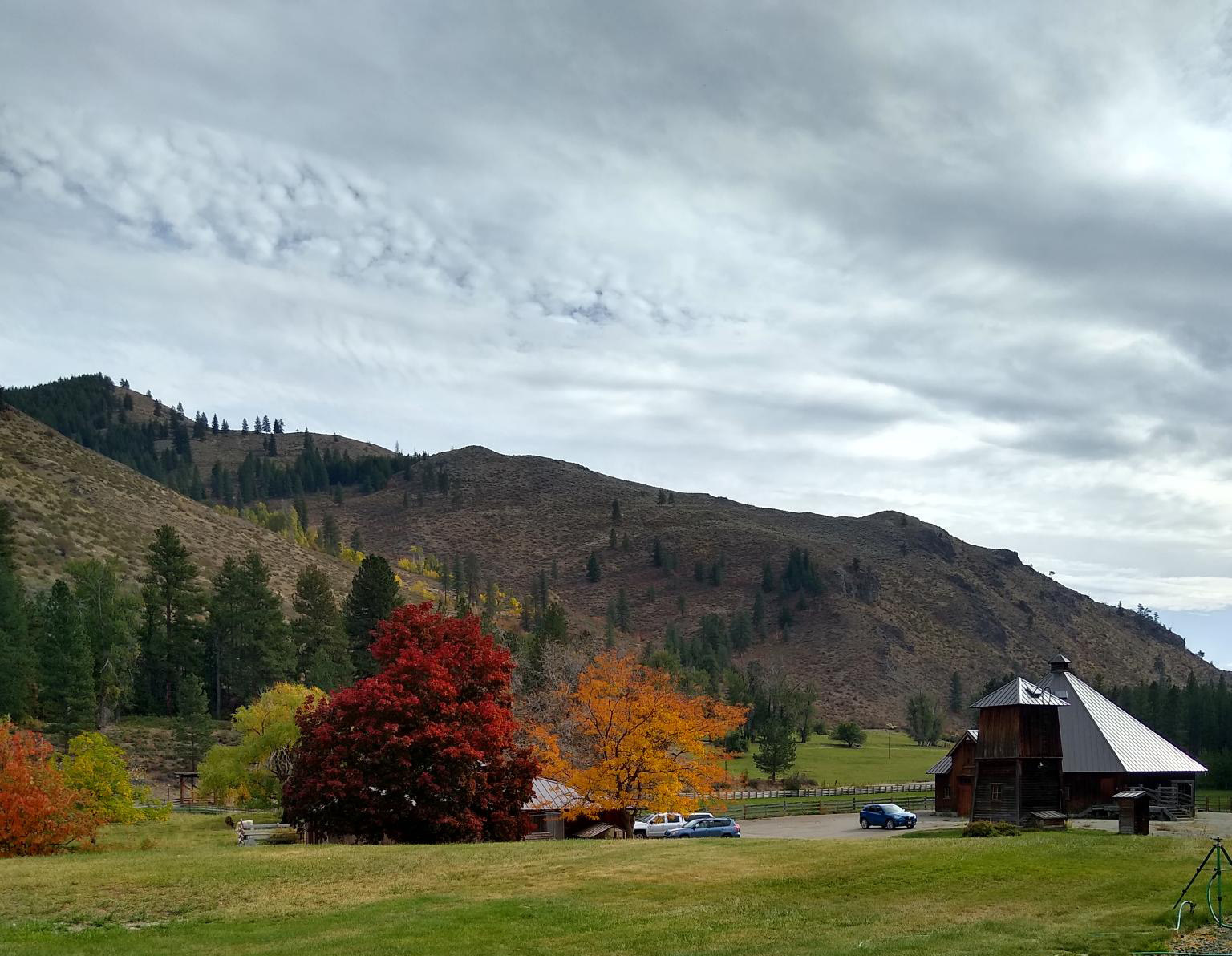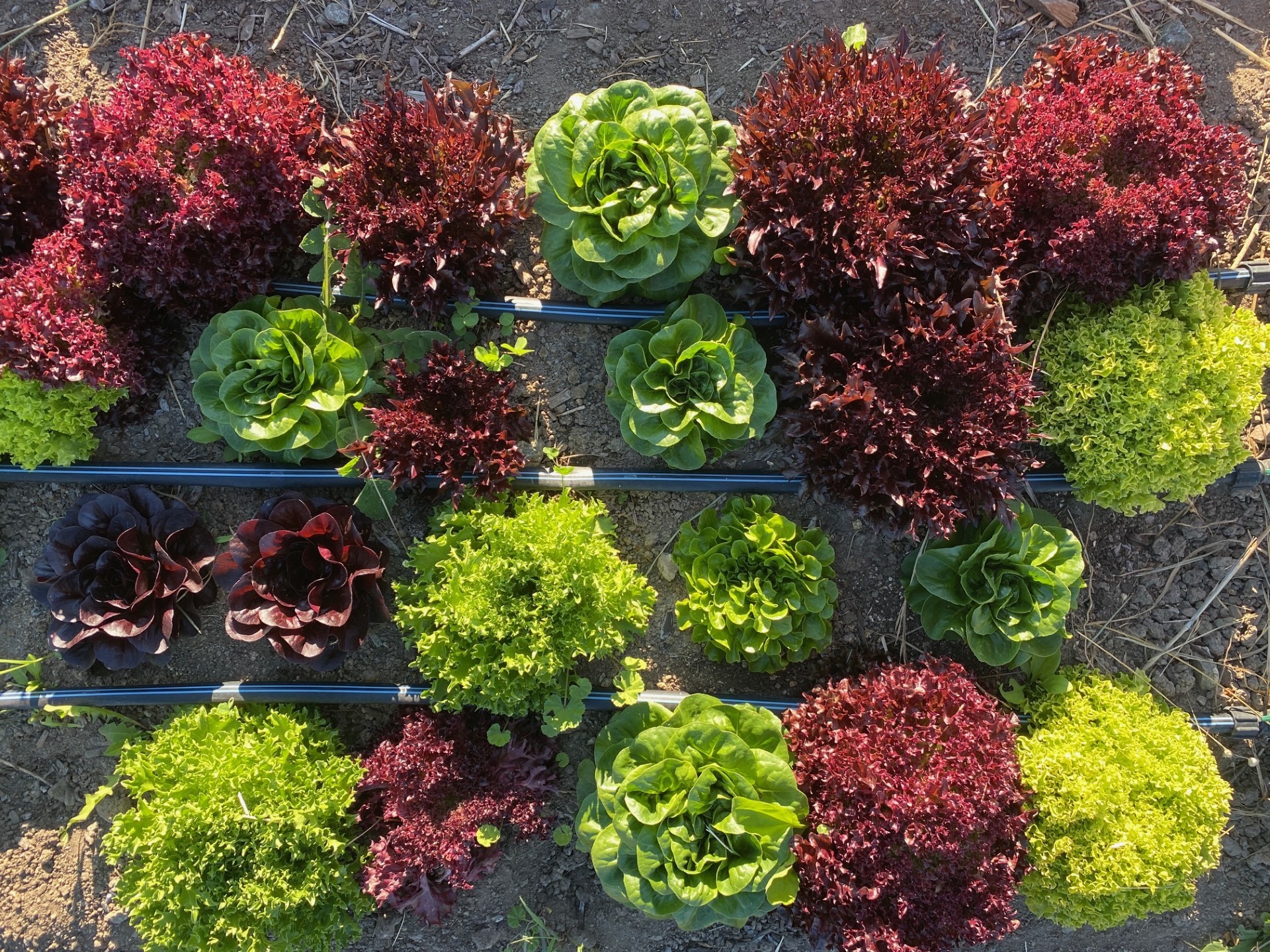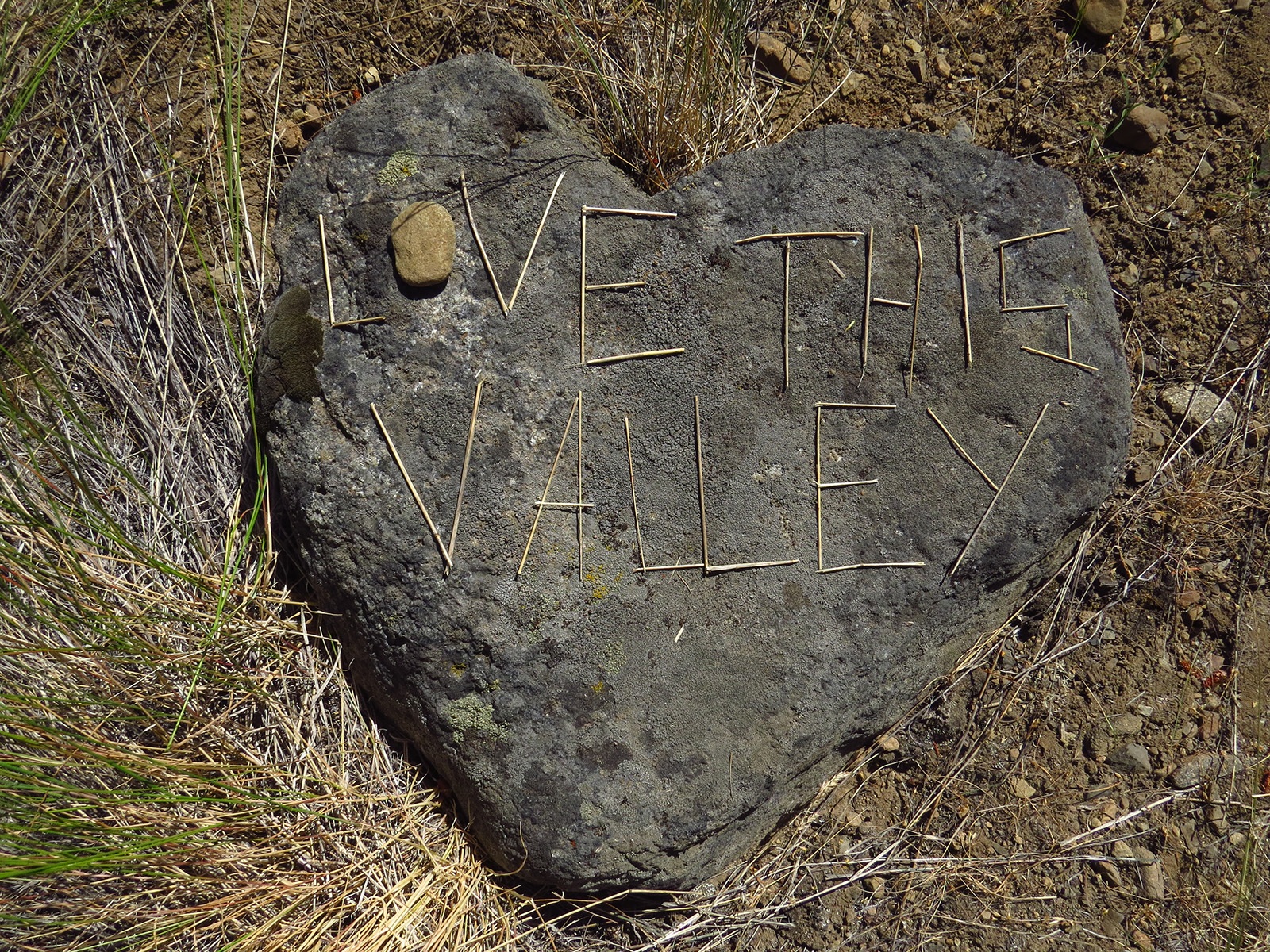Conservation is for Everyone
We believe it is important to protect the ecological health of the Methow watershed and other places like it. A healthy ecosystem provides abundant, clean water for both humans and animals; it makes our agricultural economy viable; and it also maintains the scenic values upon which our recreation and tourism economy depends. We recognize, however, that protecting ecosystem health is only part of the puzzle; not all people have equal access to local resources or feel equally welcome in this beautiful place we work to protect. We believe it is important for our work to help change this reality. The community aspect of our environmental work means we don’t just think about the environment, but also about how our human relationships affect access to this land. Below are some examples of how we are working to ensure that, in the Methow Valley, conservation is for everyone.
Our Work on Traditional Territory
For tens of thousands of years or more, the Methow Valley has been cared for thoughtfully by the mətxʷu/Methow People. We continue to build better relationships and reckon with our past with the mətxʷu/Methow Descendants who still live on and care for the land in this Valley, as well as with descendants of those who were forcibly removed and relocated.

Since Time Immemorial
13,000 years ago the last of the Missoula floods swept across Eastern Washington and down the Columbia River Gorge. Glaciologists estimate that the glaciers in the Methow Valley were up to a mile deep. The First People of the Methow Valley have stories about the great flood and its impacts.
For hundreds of generations, the Methow Valley has been the home of the mətxʷu/Methow People. The Moses-Columbia Reservation was formed in 1879 as part of early strategies to separate Indigenous people from their ancestral homelands. In 1884, the Moses-Columbia Reservation was dissolved and most of the mətxʷu/Methow People were forcibly removed out of the Methow Valley and relocated to the area east and south of present-day Omak, becoming one of the twelve tribes of the Confederated Tribes of the Colville Reservation.
Others in this diaspora refused to enter the reservations and simply stayed or dispersed in the region. Even today, many mətxʷu/Methow Tribal families maintain a consistent presence in this valley. We are grateful for the mətxʷu/Methow People's careful stewarding of this land and hope to learn from their example.
You can learn more about the mətxʷu/Methow People HERE. Additional cultural, governmental, and other information about the Confederated Tribes of the Colville Reservation, a sovereign nation, can be found HERE.
Landback
In 2021 we purchased 328 acres of ancestral lands along the Chewuch River: a piece of property that is culturally, ecologically, and spiritually important to the mətxʷu/Methow People. In 2022 we returned that land (now called x̌ʷnámx̌ʷnam, “Hummingbird") to the Confederated Tribes of the Colville Reservation on behalf of the mətxʷu/Methow Descendants. At their request, we remain involved in supporting their presence and work in the Methow Valley. Read more HERE.
If you'd like to contribute directly to the mətxʷu/Methow Descendants' cultural activities in the Methow Valley, please let us know or donate online through a secure credit card site.

Ongoing Learning
Our entire staff recently completed Indian Country 101: an online tribal engagement training series built with natural resource practitioners in mind. An Indigenous-led and Indigenous-designed training, Indian Country 101 is developed through a partnership between The Nature Conservancy and the Whitener Group.
Two other local/regional organizations in particular contribute to our cultural awareness and understanding of Indigenous peoples in our area.
- Indigenous Roots and Reparations Foundation – an Indigenous-led nonprofit established in 2021 to preserve history, culture, traditions and language through education and advocacy.
- Methow Valley Interpretive Center – located in Twisp, the Interpretive Center recognizes the pre-European history of the Methow Valley
Please consider learning more about these organizations and supporting their work. You can also learn more about the mətxʷu/Methow People HERE.
Equity in Conservation Work
As we work to broaden the lens through which we see our work, we continue to sustain and grow our efforts in addressing other inequalities in the Methow Valley, such as those related to housing and food. We also continue to highlight and encourage the support of organizations that work to ensure that conservation and outdoor recreation are safe and accessible to everyone.

Housing Access
In 2003-2004 and 2007 we conducted community focus group interviews to gather input regarding the role of our conservation organization into the future. A shortage of affordable housing emerged as a primary concern even back then. The issue has only increased in urgency in the years since.
In 2016, a community needs assessment showed that the Methow Valley was approaching a crisis regarding housing affordability; after 2018, we found ourselves definitively facing the crisis.
In 2000, 51% of owner-occupied homes were valued at less than $150,000. Now only 17% are in that price range, and most of those are in remote areas or in poor condition. 40% of Methow Valley homes are seasonal and/or vacation use homes, and only 13% of the valley’s housing stock is available as rentals. Nearly 30% of the children in the valley live below the poverty line.
In 2023 the Methow Conservancy had the opportunity to purchase a piece of land close to the Town of Winthrop that is well-suited for an affordable housing neighborhood to serve local residents, to help address the affordable housing shortage faced by our local workforce, and to address the workforce shortage faced by local businesses. As we explore possibilities for the neighborhood density and design, we are engaged in community input sessions regarding the values that will inform the eventual design. Learn more HERE.
In 2024, the Methow Conservancy gifted six acres of land between the Sullivan Cemetery and the Heckendorn neighborhood of Winthrop to the Methow Housing Trust. This relatively flat bench of land sits just below the Meadowlark Natural Area and trail system owned by the Town of Winthrop. The Methow Housing Trust intends to create a permanently affordable neighborhood to serve full-time residents. Learn more HERE.
In addition to exploring options for affordable housing on land owned by the Methow Conservancy, we are also a founding member of the Methow Housing Solutions Network, which is aimed at raising awareness in the community about potential housing solutions and the possibility for purposeful, structural change.
Food Access
Farms to Neighbors is a pandemic-inspired collaboration whose need has persisted. The Methow Conservancy raises funds from people and organizations who care about supporting local food systems and uses the funds to purchase high-quality, locally-grown produce at market prices from participating farms in the Methow Valley. The Cove Food Bank then distributes the fresh food to their clients in their weekly food boxes. Every penny goes to farmers, and every pound of food goes directly to community members in need.
The Farms to Neighbors program is based on two simple truths: everyone should have access to high quality, locally produced food and farmers deserve to be paid full price for the fruits of their labor. When it comes to food access, these two truths are often at odds. Thanks to generous community support, our Farms to Neighbors program sustains both of these truths.
Our target population is clients of The Cove Food Bank, which serves singles, families with children, and seniors on fixed incomes (ie, all ages birth-elders). The demographics reflect the Methow Valley School District. Nearly 40% of Methow Valley families are considered low-income and qualify for some form of food assistance. Farms to Neighbors currently serves 75 local families, with need growing. Learn more HERE.
Other Organizations
Each month in our monthly Enews, we feature an organization that inspires us to reimagine some aspect of our work. We have also curated a list of local and regional non-profit organizations below, all of whom, in unique ways, guide the way we consider community-based conservation. Please consider supporting them and the important work they're doing.
- The Cove Food Bank – our local food bank, whose mission is "feeding and caring for the Methow Valley Community while honoring and respecting one another at difficult times in our lives."
- Methow Housing Trust – our local community land trust, which "develops and preserves permanently affordable, quality housing for residents of the Methow Valley."
- Team Naturaleza – a resource for the Spanish-speaking community in North Central Washington, Team Naturaleza’s mission is to: engage Latinx/Hispanic bilingual communities in informal natural science education and to achieve a healthier community by getting people safely outdoors.
- FYRE - Foundation for Youth Resiliency and Engagement - founded by Amitie Sandoval, Mady Sandoval, and Michelle Sandoval, PhD, all of whom grew up in Okanogan County, FYRE is "committed to centering the voices of today's and tomorrow's youth, using knowledge and critical thinking for the betterment of our community, and addressing equity and inclusion through deliberate representation and advocacy."
- Climbers of Color - a Washington State non-profit that aims to promote diversity, equity and inclusion in the climbing and mountaineering community by creating leaders of color.
- The Mountaineers -- based in Seattle, this outdoors-based adventure organization has a variety of programs and initiatives focused on ensuring the outdoors are and feel accessible to all.
- Latino Outdoors – a Latinx-led organization working to inspire, connect, and engage Latino communities in the outdoors and embrace cultura y familia as part of the outdoor narrative, ensuring our history, heritage, and leadership are valued and represented.
